– What production work have you done with 3D Studio / Max?
Jon Bell and I collaborated on some work for Terminator 2: Judgment Day – Some of the graphics seen on the computer screens at the Cyberdyne Systems Corporation. Jon Bell is actually in one of those scenes as the camera moves past some guys working at their computers.
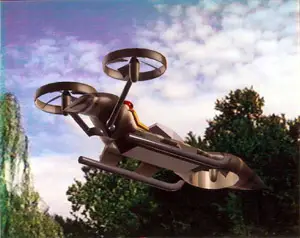
The first complete scene created with 3D Studio release 1, by Tom Hudson and Martin Doudoroff
Some of the work we created for Terminator 2 wasn’t used on that film, and we were surprised to see it turn up in True Lies a couple of years later – Again, some graphics on computer screens.
Jon and I also worked on Honey, I Blew Up the Kid – Again, some computer screen graphics for the Sterling Corporation and Rick Moranis’ shrinking/enlarging machine.
I did something like 12 different shots for DS9, as I mentioned.
Also, I did some advertising graphics for a producer in Kansas City and for Channel 41 in Kansas City, around 1992. Nothing earth-shattering, but one project was kind of fun – A fly-through of a huge model of an outdoor shopping center where the edges of the buildings are outlined in Christmas lights – I modeled up the scene then wrote a custom IPAS plugin that added the little multicolored lights to the appropriate edges of the buildings. That saved a lot of time!
– You participated and saw the birth of many socially-oriented CG activities and trends: CG art competitions, sharing of scripts, creation and distribution of 3D clip art, user forums, etc. How has the net changed 3D related social activities and CG software development?
There is really no way to adequately describe what the Internet has done to help move CG forward! I think back to the days when we were starting the Cyber Studio work on the Atari machines, and there were very few readily-available sources of information. I still have my Principles of Interactive Computer Graphics book on my shelf, which was the foundation of much of my early work. I remember running into problems that had no obvious solution, and trying to figure out how to solve them sometimes took weeks of research. Today, I’d simply Google them and have a solution in seconds!
One problem I ran into back then was a really simple one that had to do with perspective correction on textures, and when I found someone who had the solution, he wanted hundreds of dollars to tell me what it was! I went off and found the solution myself, but today people are sharing a lot more than that for free on the Net. That free exchange of ideas is invaluable. And it helps all of us.
– Have you been to SIGGRAPH recently, and what’s your theory on the fact attendance keeps on going down?
I went to the Boston SIGGRAPH a few years ago, which was a lot of fun. The only reason I can think of that would be reducing attendance is that so much of the information I used to go to SIGGRAPH to get is now available on the Net! Sure, there are some cutting-edge papers and things that you’ll get at SIGGRAPH, but for the most part, many people can find what they need without having to attend a conference like that. I always loved going to the Electronic Theater presentation there, which was always inspirational, but it seems like now that you have YouTube and other ways of watching videos online, even that has lost a bit of its drawing power.
– Do you feel that the graphics field is as exciting as it was 10-20 years ago, or has innovation basically slowed down these past few years?
It’s absolutely as exciting, if not more so! Recently, a friend pointed me to a short film called The Third & The Seventh, a photorealistic CG masterpiece done with Max which was basically created by one person, kind of like my Cornerstone was, 20 years ago. In forums where the work was posted, there are skeptics who refuse to believe it’s CGI!
The fact that this person was able to create something so absolutely photoreal in many places is incredible, and it is exactly what I had dreamed of years ago when starting on this path.
Back in the early days of 3DS, we were trying to get our code efficient enough to generate reasonably-realistic images in a reasonable amount of time, so we took all sorts of shortcuts and used various cheats (many gained from attending SIGGRAPH!) to get there. The machines we were using had 32MB of memory, which we thought was heaven itself, but compared to machines today, it’s nothing.

An image from Jorge Seva’s (a.k.a. Alex Roman) inspirational short film: The Third & The Seventh. Created with 3D Studio Max
The evolution of hardware continues to deliver faster and better ways for artists to work with 3D, and in a kind of endless cycle, this enables the software to get better at delivering photorealistic results, because the speed-enhancing cheats that compromised image quality are no longer necessary. Take a look at The Third & The Seventh and you’ll see what I mean – The illumination of the scenes and realism of some of the shots is breathtaking.
I think the synergy of hardware, software and artistic talent is where the real excitement is today, and I don’t see it slowing down at all.
– Gary Yost mentioned choosing the name Cyber Studio for Antics software because the company was creating tools for “graphiker pilots to voyage into their imaginations”. How has the profession of CG artists evolved from the early days of 3D Studio to these days?
That’s so hard to nail down! From my vantage point, which is going to be biased, I see something interesting, because a number of the CG artists I know (Andy Murdock, Michael Spaw, Darrell Anderson, for example) seem to have started out in more traditional media but when they got into CG, they started working with scripting and some actually started writing C++ code to push the tools to where they needed them to be! In the early days, artists were dependent on the coders (as with when Dan and I were coding 3DS DOS) to do everything – They were at the mercy of the software providers.
As soon as scripting languages, shader languages and plugin SDKs were made available, the really innovative and motivated artists jumped right on them because they saw them as an extension of their toolset. It’s the term “renaissance man” brought up to the 21st century – I’d easily see someone like Leonardo da Vinci coding away in MaxScript!
This is more exciting than ever for me – I remember Darrel Anderson, who worked with us back on the Atari software, showing us some of the awesome models he built with our simple scripting tools – Animated, rippling manta ray shapes, things I would never have thought of doing. It’s why you want real, honest-to-god artists working alongside the technical geeks. It makes us look better than we are.
I say it all the time: I look forward to seeing what you create with our software – And that is absolutely true. From day one of 3DS, I’ve been thrilled to see what creative stuff our users come up with. The more tools we put in their hands, the more they surprise me.
– You worked on many areas of 3D development including rendering, stereoscopic imaging, scripting languages, APIs/plugins, and more. What current advances in these areas do you find interesting? What interesting developments in CG do you see coming up in the future?
Well, the most recent example, probably an obvious one, is the film Avatar. Back in the Atari days, we introduced the stereo vision add-on for the Cyber Studio software, and we learned a lot about stereo vision and how to make it work. When we were working with the technology, we learned a lot about what to do and what not to do. We were a bit ahead of our time with the technology, but I remember doing some testing modeling with the 3D glasses on and it was awesome to work with a mesh in 3D. Very natural.
Back then, if a movie was made for stereo vision, you invariably walked out of it with a headache because the technology was crude and inconsistently set up from one theater to another. Plus, those “gimmick” films loved to push the stereo effect too far, with stuff coming out of the screen and causing massive eye strain.
James Cameron obviously “gets it”, because Avatar was simply a movie that happened to be shot in stereo. No over-the-top “coming at you” stuff that would cause eyestrain – It’s all very restrained, and the new projection technology has eliminated the variables of setup problems at individual theaters.
The last time stereo moves became popular, it proved to just be a short-lived fad, but we’ll see where this goes. In a world where movie theaters need a product that will draw in viewers who often have their own big-screen HDTV at home, maybe the stereo films will have more staying power. I know of a number of stereo CG film projects coming up; and films like Avatar will hopefully push the envelope a bit more so that we get more and better results.
But beyond the relatively simple technical challenges of stereo presentation, the big deal about Avatar was that the synthetic characters have done a great job of crossing the “uncanny valley” and becoming believable. That’s a huge accomplishment, and it’s set a new standard for CG films..
Before its release, I had my doubts about Avatar’s appeal to the general public. But it’s now clear that a film that’s largely CG can rise above simply being a cartoon.
– What one piece of advice would you give the team currently working on Max in Montreal?
To always look toward making the software as flexible and robust as possible. Right now it’s largely there, because plugins can do just about anything. Max is the ultimate expression of what we started to do back in the IPAS days with 3DS DOS – Open the platform up so that it can be infinitely expanded and improved by others.
– We’ve heard rumors of a Greeble Plus with way more control over panel types and such. Any truth to those rumors?
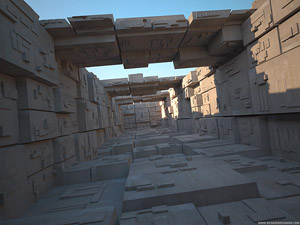
An image created using Tom Hudson’s Greeble plugin by Canadian artist and Greeblelicious founder Richard Rosenman
Yes! I have a new Greeble version that I’ve been puttering with for several years now – Much more extensible and flexible – The problem is getting focused on it long enough to finish it up. The original was written as a favor to Jon Bell, who needed something extra for his first 3DS Max book, and it was pretty limited, though people seem to enjoy it. Naturally, after playing around with it, I saw a number of places where it could be improved, and started toying around with some changes that would make it better at things like creating cityscapes and such – Better texturing controls, etc. One of these days I’ll set aside some time and finish up the initial release.
– Any interesting or funny anecdote that you recall from 3DS / Max development?
Just an example of the “by the seat of our pants” attitude in the early days of 3DS:
When we started working on the 3DS project, it was just me coding for the Shaper, Lofter, 3D Editor, Materials Editor and Renderer modules – Then we brought in Dan Silva to create the Keyframer. Initially, all of these were separate application programs that were chained together because the memory constraints of DOS were so limiting. I hated it – It was really slow and clumsy and each module had to save out the data it was working on in order to hand it off to the next module.
On top of that, we had the problem of a lot of duplicated code between the modules for the GUI and such, and anytime we changed the GUI in one module, we’d have to make sure the same change was made in every other module that had the same functionality – It was going to be a maintenance nightmare.
Shortly before we were due to release 3DSr1, we found out that Autodesk was using a product called Phar Lap DOS Extender, an operating system that was specifically designed to overcome the limitations of standard DOS. Using Phar Lap would allow us to create one application executable with all the modules contained within, making the program faster and vastly easier to maintain. We were just a couple of months away from release, but we made a fairly high-risk decision to take the plunge and convert to Phar Lap.
I flew out to San Francisco and spent over a week at Dan Silva’s home office and we ripped the program apart and put it back together under Phar Lap. Any number of things could have gone wrong in this major conversion, but we pulled it off! Other software at the time was hobbled by a “separate module” architecture but having 3DS run as an all-in-one solution, it really made for a smoothly operating package that felt like an integrated whole.
Looking back on it, nobody in their right mind would attempt such a radical change so late in a product’s development cycle!
– Anything you’d like to mention to readers that we haven’t asked you about?
Just that I’m always happy and excited to see what people are creating with 3DS Max. 3D Artists rock.
We would like to thank Tom Hudson for his great generosity and invaluable help in preparing this article. He has gone far beyond what we asked for, joining us in our research, and adopting it as his very own. The quality of the article is the result of his work and enthusiasm. We would also like to thank José María De Espona, Miguel Gómez (Dimensión 2.5), Jorge Seva (Alex Roman) and Richard Rosenman for their help and generosity. A special thanks goes to Martin Doudoroff, without whose excellent documentary work on the early history of 3D Studio much of this article would’ve never existed. In Yost we trust.
Part I: Tom Hudson interview
Part II: Gary Yost interview
Part III: De Espona on the Max Temple image

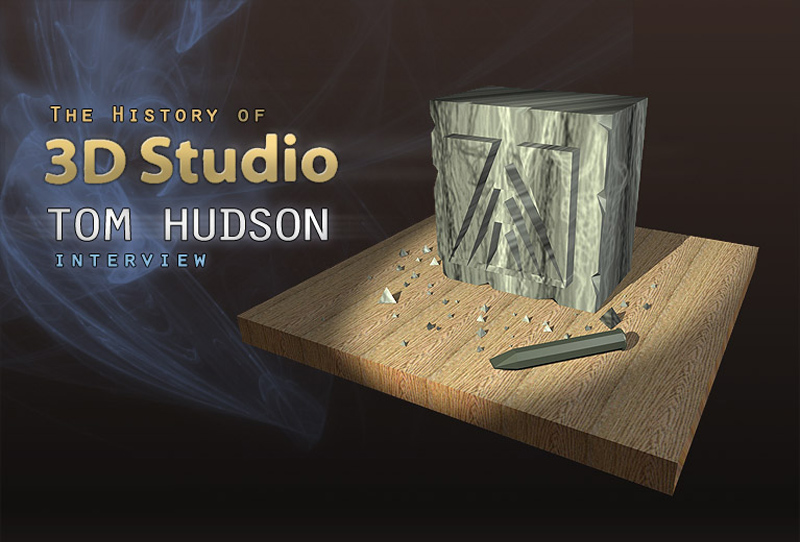


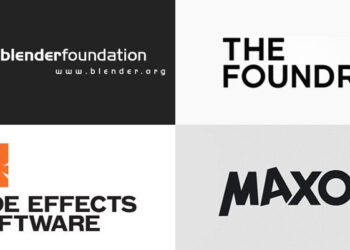
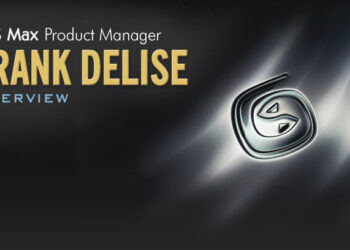


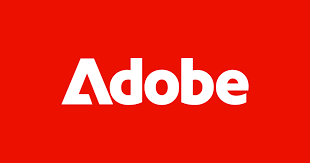

Thanks so much for getting this article out.
It’s such a pleasure reading about the history of my software and the people behind it.
Always the best to you
b
Fantastic interview – I really enjoyed reading Gary’s perspective!
Excellent article and a great piece of 3DS history, which in turn in a piece of “our” history for many of us.
Many thanks for all the good words! This has been one of the most enjoyable projects we’ve had at MU. It’s great to see you enjoyed so much reading the articles too.
PS: Consolidated threads. Now all comments go to the same place. Makes mores sense. 🙂
Really interesting article. I’ve been using max for about 10 years and it’s good to know its origins!
Cheers
hmmmmm., it seems that my cg idol Alex Roman has a part in cg history. it inspired me everytime i saw his name.
I am user “3d Studio” from the DOS version 1.
Unfortunately, in recent years 3dsmax does not bring ,more magic (or stars in your eyes) …
We no longer distinguish the difference “3Dstudio Design” for architects.
Where is the 3dsmax for “artist” … ?
More and more users are moving towards “Modo”, “Houdini”, “Blender” …
Faster, lighter, and modern … it makes me sad …. but Autodesk does NOT move.
“The Foundry” and other Society… use this situation with intelligently ….
3ds max my my favorite soft!
Working with it since version Discreet 3dsmax 5!
Superb, excellent and fantastic for us to read!
I still have my R1 Manual, with the handle, to show students at LiU in my lectures….. 😊
Michael